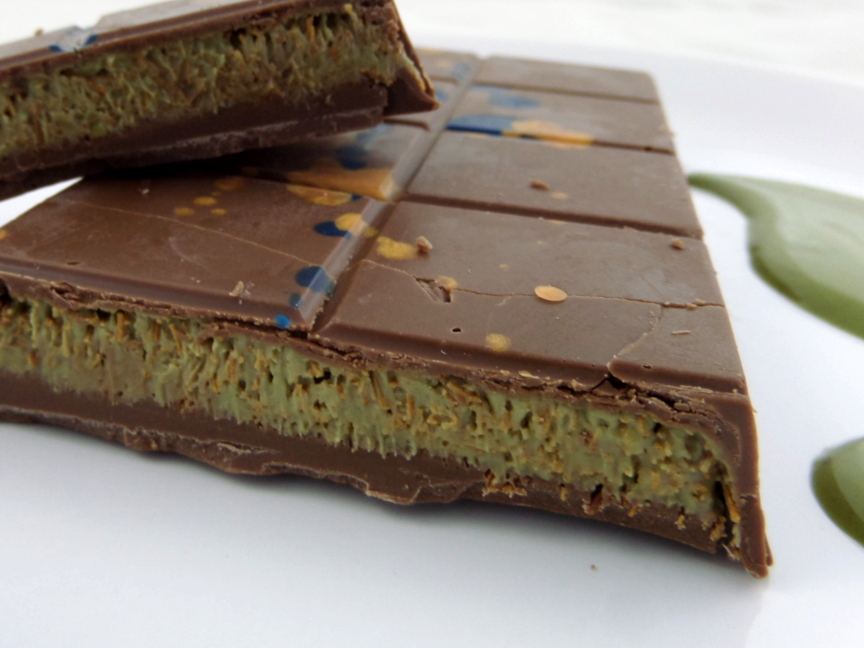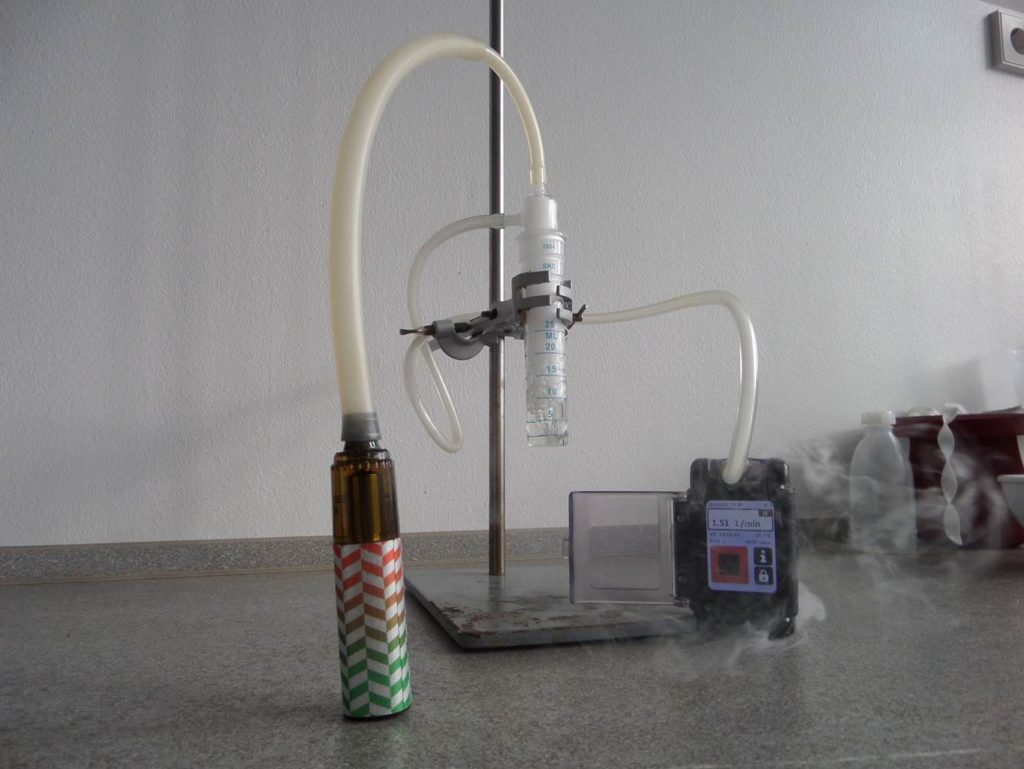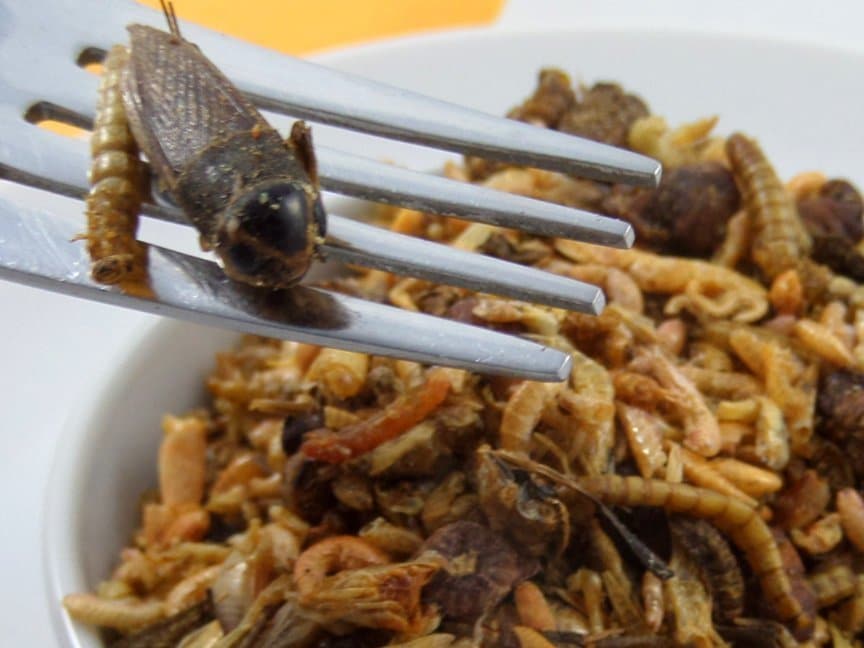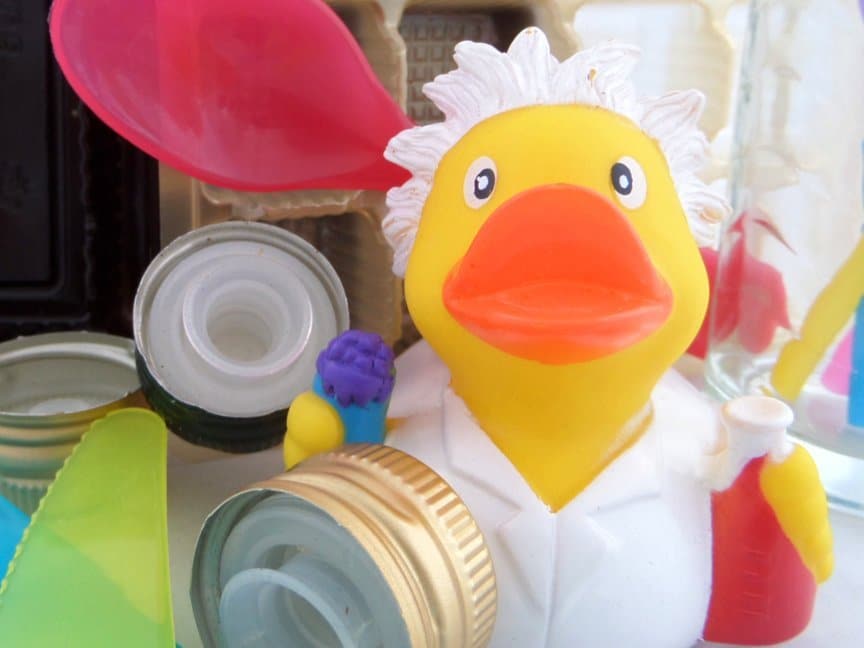There is nothing better to philosophize about endlessly than a healthy diet. What is healthy? What isn’t? Have the vegetarians got it right? Or was the diet in the stone age preferable? With lactose? Without gluten? With soy milk or cow milk?
Whether your personal choice is a vegan, vegetarian or mixed diet, everybody agrees about one thing: the quality must be good and the food must be free of pollutants.
The following is a presentation of the different groups of foodstuffs with their specific requirements.
Grains and Grain Products
Botanically speaking, grains belong to the family of grasses (poaceae). They are annuals and have been cultivated for the last 5,000 years.
They are staple foods for human beings and animals.
The most common kinds are maize, rice, wheat, rye, barley, oats and millet.
So a great deal is done in agriculture to protect grain from hungry enemies, diseases and mold.
It is therefore necessary to pay close attention to the quality of these product groups.
Plant Protection Agents
Plant protection agents – pesticides – are commonly used in conventiional agriculture. More than 700 different active ingredients used in different combinations are approved and sold. They are either systemic (inside the plants) or non-systemic (on the surface).
The pesticides can be categorized according to their effect. Among the most wide spread types are the following:
Herbicides (against plants and „weeds“)
Insecticides (against insects)
Rodenticides (against rodents)
Fungicides (against mold)
Molluscides (against snails)
Growth regulators (which improve the plant stability and the roots of cuttings)
Mycotoxins
Along with residues from plant protection agents, mold is a serious problem with grains, especially in the warm, humid summer months. The mold itself is not the problem, but rather the poisons developed in it, the so-called mycotoxins.
Mycotoxins can be divided into several groups:
Aflatoxins (in maize, grain, dried fruit, spices, …; carcinogenic)
Deoxynivalenol (in grain; can cause loss of appetite, vomiting, diarrhea, headaches)
Fumonisins (in maize, moldy vegetables; possibly carcinogenic)
Ochratoxin (in maize, wheat, coffee, grapes, peanuts,…;toxic to the kidneys, supresses immune system)
T2 and HT2 (in maize, barley; supresses immune system)
Zearalenone ZEA (in maize, grains; estrogen)
Heavy Metals
Lead, cadmium, arsenic, and quicksilver are the metals most commonly examined in grains.
Gene Manipulated Organisms (GMO)
The cultivation of gene manipulated plants is growing world wide, especially gene manipulated maize. It is the main animal feed. A growing number of types are being used. The labeling identifying food is not also not always clear. And the TTIP free trade agreement has left many consumers with a feeling of uncertainty.
Quality Parameters
Besides examining what unwanted substances are in our food, it is also important to check the quality of the food itself. Especially important are the quantity and quality of the starch, the protein content, the roughage and the minerals.
Three characteristics are decisive for wheat used in baking:
the protein content, the protein quality and the quality of the starch.
The amount of protein can be measured quantitatively.
The quality of the protein can be determined by the sedimentation rate.
The quality of the starch can be determined using the so-called falling number.
Processed Foods
Ravioli in a can, instant soups, orange lemonade or the baking mixture for the cake on Sunday are all processed foods.
These products are divided into partly prepared foods and those ready to eat. They can be subdivided into the following groups:
Ready to eat (e.g. egg salad, ice cream)
Ready to heat (e.g. frozen pizza, canned ravioli)
Ready to infuse (e.g. instant noodle soup, pudding powder)
Pre-cooked (e.g. breaded chicken breast, noodles)
Ready to cook (e.g. frozen vegetables, noodles)
There are many steps between raw materials and pre-prapared foods. The food can be cut up, mixed, heated, stirred and packed. The final result will hopefullly be a high quality product which looks attractive, smells good, has a good consistency and tastes good. But many steps in production can also mean many mistakes that can be made.
There are a whole series of parameters which can be checked.
The following is a selection:
Quality
Nutritional value, composition
Sensory impressions (look, smell, taste, texture)
Vitamin content
Type of animal
Contaminants
Allergens (at this time, the following allergens must be noted on labels): grains containing gluten, shellfish, eggs, fish, peanuts, soybeans, milk (including lactose), nuts (which must be named), celery, mustard, sesame seeds, sulphur dioxide and sulphite (more than 10 mg per kilogram or liter, lupines and mollusks.
Microorganisms (salmonella, yeast, mold,…)
Plant protection agents
Gene manipulated organisms (GMO)
Mold toxins (Mycotoxins)
Residues of veterinary medicines
Coffee, Tea, Cocoa
The smell of freshly brewed coffee, tea, or a hot cocoa can give you a feeling of comfort and coziness. It’s like a small vacation, a moment to relax. All three have conquered the world and are an intregal part of our daily lives.
Quality and safety are important here.
![]()
Coffee has its origins in Africa from where it spread to the Arab world, Constantinople and Venice. It reached Europe by the middle of the 19th century and is drunk everywhere now.
Today Brasil, Vietnam and Indonesia are the biggest coffee producers. Coffee requires a stable climate with temperatures between 13° and 30° degrees centigrade and between 1500 and 2000 mm of rain annually.
There are about 70 different kinds of coffee but only two which are of commercial importance, Coffea arabica (75%) and coffea canephora (robusta) (25%). The other kinds have a 1% share between them.
From an analytic point of view the following parameters are significant:
Content:
coffein, flavoring agents, minerals, acids
Contaminants
Heavy metals
Mycotoxins (Ochratoxin A)
Furan
Acrylamide
Plant protection agents (raw coffee)
![]()
Tea (camelia sinensis) has its origin in Asia, or China, to be more precise. It was brought to Europe in the 17th century by the Dutch.
Tea is made from young leaves and buds. Depending on the processing (fermentation), it is made into black tea, green tea, oolong tea or white tea.
Black tea: fermented tea
Green tea: unfermented tea
Oolong tea: half fermented tea
White tea: up to 20% fermented tea
Especially important contents are catechine and, of course, coffein, of which tea can contain 4.5%.
From an analytical point of view, the following parameters should get special attention.
Contents
Coffein
Catechine
Minerals
Extracts
According to the guidelines for tea and similar products, the amount of acid insoluable ashes should not exceed more than 1% and the loss of water should not exceed 8%.
Contaminants:
Plant protection agents,
Pyrolizidine alkoloids
Nicotine
Polycyclical aromatic hydrocarbons (PAHs)
Micoorganisms
Mold toxins (mycotoxins)
Heavy metals (lead, cadmium, arsenic, quicksilver)
![]()
Cocoa is made from the seeds of the cocoa tree (theobroma cacao). Originally it is from South America. There are two main kinds that are commercially exploited: forastero and criollo. Forastero is more robust and has higher yields, but is less flavorful.
From an analytical point of view, special attention should be paid to the following parameters:
Contents:
Theobromine,
Fats,
Minerals,
Vitamins
Contaminants:
Heavy metals: cocoa is one of the plants that absorbs a lot of heavy metals from the soil.
Mycotoxins (Ochratoxin A)
Plant protection agents
Herbs and Spices
Were you ever in an Indian restaurant? And were you also overwhelmed by the odors emanating from the spices?
Spices are parts of plants (roots, seeds, leaves,…) which naturally add flavor and aroma and ethereal oil to food. Spices improve our food. They make the taste of the food just explode. They are used fresh or dried, whole or as a powder, alone or mixed.
Quality and safety are both very important here. Many unwanted and dangerous substances can find their way into our food along with the spices. Children are at special risk.
Examples of Possible Contaminants:
Unallowed color additives to give the mixture a more intensive color,
Heavy metals,
Mold toxins (e.g aflatoxins which develop when the drying process is not properly done,
Pyrolizidine alkoloids (in herbs),
Nicotine,
Plant protection agents (pesticides),
Microorganisms,
Allergenic substances
Milk and Dairy Products
Milk is a food of animal origin made up of water, lactose, fat and proteins. This fluid is produced by mammals to feed their young. Cow mild is commercially the most important. We know that milk has been used from the early stone age as food for humans. Sheep and goats were domesticated first, then cows.
German consumption per person annually:
24.6 Kilograms of cheese
17.0 kilograms yoghurt
57.6 kilograms of milk
[expand title=”Analysis of milk and dairy products”]
From an analytic point of view, the following parameters are important:
Fat content,
Protein content
Freezing point (milk)
Sensory impressions (look, taste, smell, texture)
Contaminants:
Microorganisms
Veterinary medicines
Plant protection agents (fat soluable pesticides)
Fruit and Vegetables
The call to eat fruit 5 times a day is geared to a healthy diet with regular consumption of fruit and vegetables. However, in recent years there have often been headlines about pesticides in conventional products such as grapes, tomatoes, pomaceous fruit, and berries. NGO’s have often pointed this out. This has led to an improvement in quality.
Whether you really eat this food five times a day is up to you. Everybody has his own dietary philosophy. In any case, it is advisable to ingest as few contaminants as possible along with your fruit and vegetables.
From an analytic point of view, the following parameters are important:
Quality Parameters
Vitamins
Minerals
Contaminants:
Pesticides – The producers use pesticides to protect the products from predators, insects, mold, etc. If allowed substances are used properly, the amount of pesticide in the product should not exceed the established limits. Legal problems develop when the pesticides are improperly used or when forbidden substances are employed.
Nitrate in leafy green vegetables and root vegetables – Plants need nitrate to build proteins. They get it from the soil. Leafy green vegetables and root vegetables are plants which systematically absorb nitrate. This means that the concentration of nitrate in these plants is higher than in other vegetables grown in the same soil.
The mold toxin petulin (fruit and tomatoes) – Patulin often develops from penicillium (P.) expansum, which is the main cause of rot in fruit and vegetables.
Microorganisms – If the water in your watering can is contaminated, the microorganisms will be transferred to the plants. This can mean that faeces pathogens enter them. Since EHEC, it has become clear that we should be careful with food that has not been heated.
Oil and Oil Seeds
Oil producing plants are among the ones that have been cultivated the longest. Fats and oils from plants are an important part of our diet. The difference between the two lies in their consistency at room temperature. Fats are solid, oils are liquid.
Fats and oils are very nourishing. A gram of pure fat contains 38-39 Kilojoule. The human body requires fats or at least parts of fats to build membranes.
Fats are a mixture of triglycerides. Triglycerides are made up of trivalent alcohol combined with different fatty acid residues. Every oil plant produces its own special combination of fatty acids, which, of course, fluctuate. Nonetheless, an analysis of the make up of the fatty acids can provide a good indication of whether the oil is really the one declared on the label. The amount of oleic acid in olive oil, for example, is especially high but the amount of linoleic acid is much less than in rape oil.
In general we differentiate between polyunsaturated and saturated fatty acids. Some polyunsaturated oils play a special role because our bodies cannot produce them so they must be eaten. This makes them essential. Especially important are polyunsaturated Omega-3 (e.g. linolenic acid) and Omega-6 (linoleic acid) fats.
The relevant parameters for this product group are:
Sensory impressions (look, taste, smell, texture),
Fatty acid composition,
Long chain fatty acids
Contaminants
Plant protection agents,
Heavy metal,
Polycyclical aromatic hydrocarbons (PAHs),
Mineral oil hydrocarbons,
Softeners (in fats and oils),
Solvents (in fats and oils)
Mold toxins (mycotoxins) (in oil seeds)
Water
No food is controlled as carefully and as often as our drinking water. This is regulated by law. Drinking water must be colorless, odorless, free of pathogens and have a neutral taste. Usually everything is the way it should be when the water leaves the water works. But what happens afterward? A secondary contamination with bacteria, viruses or heavy metals can take place. Hot water tanks, for example, are often a source of contamination.
Along with communal water works, there are many households with their own private facilities. There is no municipal control over them so the owner has to have these facilities tested. He or she alone is responsible.
Together with our drinking water, you can find bottled water such as mineral water and table water in almost all households. Mineral waters are also carefully controlled by a network of regulations. Nonetheless, NGO’s like Stiftung Warentest and Ökotest have proven that mineral waters can vary in quality.
The following parameters are sensible:
Drinking water: microorganisms, heavy metals and radioactivity
Household water ( non-potable): Microorganisms and heavy metals, minerals (natrium), plant protection agents and their degradation products, hormones, acetaldyhyde, minderals (natrium)



